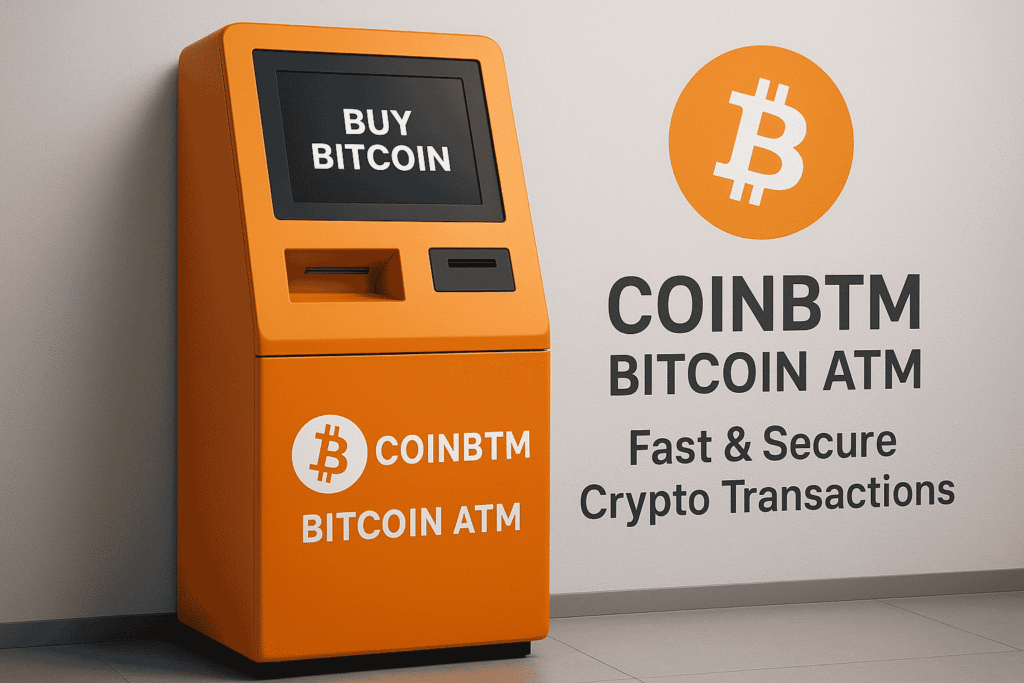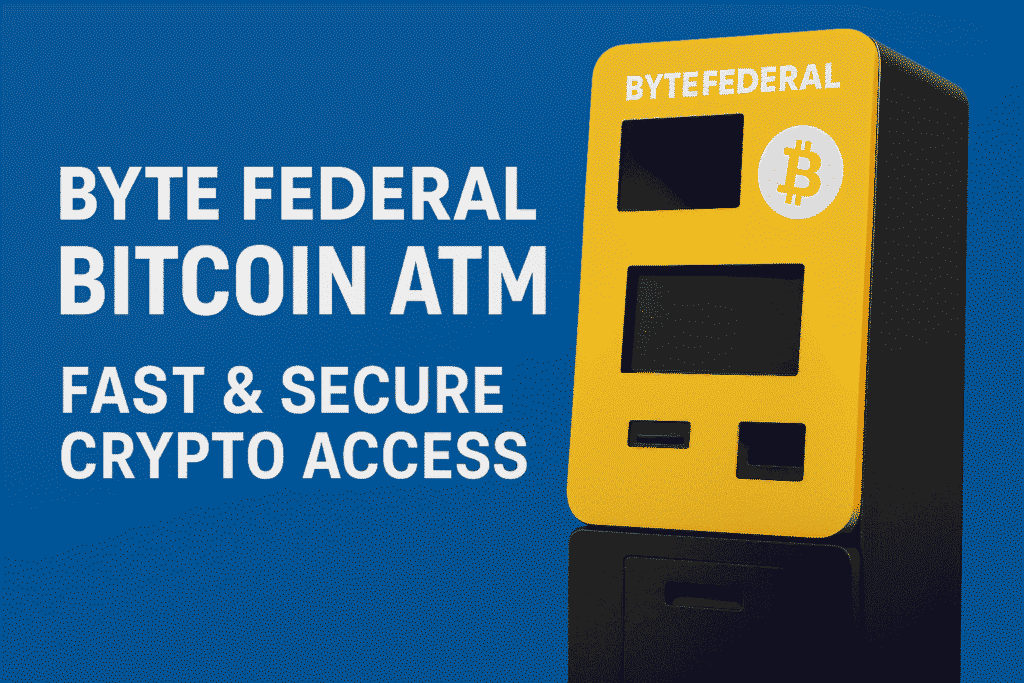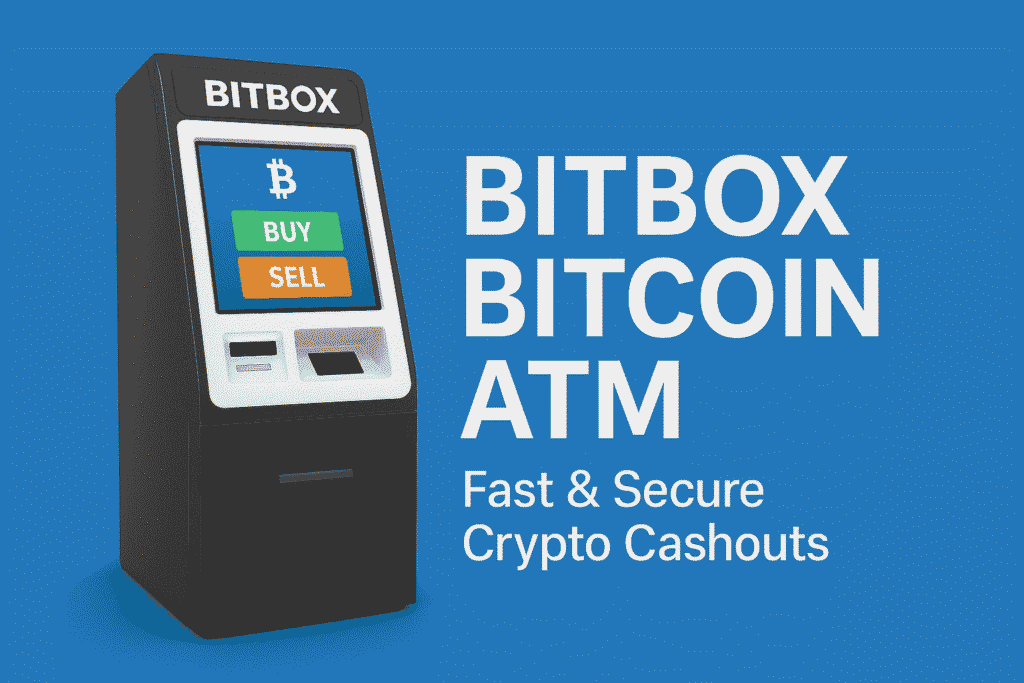In recent years, Bitcoin has become increasingly popular as a digital currency and investment option. As its adoption grows, so does the demand for convenient ways to buy and sell Bitcoin. Enter Bitcoin ATMs—automated teller machines that allow users to purchase or sell Bitcoin using cash or debit cards. If you’re new to the world of cryptocurrencies or simply curious about how to use a Bitcoin ATM for the first time, This comprehensive guide will walk you through the process step-by-step.
What is a Bitcoin ATM?
A Bitcoin ATM, also known as a Bitcoin Teller Machine (BTM), is a kiosk that allows users to buy or sell Bitcoin using cash or debit cards. These machines provide a bridge between the digital world of cryptocurrencies and traditional fiat currencies. Bitcoin ATMs offer a quick and convenient way for people to enter the crypto market without needing to use online exchanges or peer-to-peer platforms.
Types of Bitcoin ATMs
Before using a Bitcoin ATM, it’s essential to understand that there are different types of machines available:
a) Unidirectional ATMs: These machines only allow you to buy Bitcoin.
b) Bidirectional ATMs: These more advanced machines enable both buying and selling of Bitcoin.
c) Cash-only ATMs: Some machines only accept cash for Bitcoin purchases.
d) Card-enabled ATMs: These allow you to use debit or credit cards in addition to cash.
Knowing the type of ATM you’re dealing with will help you prepare for your transaction accordingly.
Finding a Bitcoin ATM Near You
To locate a Bitcoin ATM in your area, follow these steps:
a) Use online directories: Websites like Coin ATM Radar or Bitcoin.com ATM Map provide comprehensive listings of Bitcoin ATMs worldwide.
b) Check manufacturer websites: Major Bitcoin ATM manufacturers often have their own location finders.
c) Use mobile apps: Download apps like CoinATMRadar or FinderBTM for on-the-go ATM locating.
d) Ask local crypto communities: Join local Bitcoin meetups or online forums to get recommendations from experienced users.
When searching for an ATM, pay attention to factors such as operating hours, supported cryptocurrencies, and any specific requirements or limitations.
Preparing for Your Bitcoin ATM Transaction
Before heading to a Bitcoin ATM, take these preparatory steps:
a) Create a Bitcoin wallet: If you don’t already have one, set up a Bitcoin wallet on your smartphone or use a hardware wallet.
b) Verify ID requirements: Some ATMs require identity verification for larger transactions. Check if you need to bring any form of ID.
c) Check fees and limits: Research the ATM’s fees and transaction limits to avoid surprises.
d) Ensure sufficient funds: Bring enough cash or ensure your card has sufficient funds for your intended transaction.
e) Note down your wallet address: Have your Bitcoin wallet address readily available, either as a QR code or alphanumeric string.
Step-by-Step Guide: How to Buy Bitcoin at an ATM
Follow these steps to purchase Bitcoin at an ATM:
- Locate the ATM and approach it.
- Select the “Buy Bitcoin” option on the screen.
- Choose the amount of Bitcoin you want to purchase.
- Scan your Bitcoin wallet QR code when prompted. This is where your purchased Bitcoin will be sent.
- Insert cash into the machine or swipe your debit card, depending on the ATM type.
- Confirm the transaction details on the screen.
- Wait for the ATM to process your purchase. This usually takes a few minutes.
- Once complete, the ATM will provide a receipt. Keep this for your records.
- Check your Bitcoin wallet to confirm the received funds.
Step-by-Step Guide: How to Sell Bitcoin at an ATM
If you’re using a bidirectional ATM to sell Bitcoin, follow these steps:
- Select the “Sell Bitcoin” option on the ATM screen.
- Enter the amount of Bitcoin you wish to sell.
- Specify how you want to receive your cash (e.g., dispensed from the ATM or bank transfer).
- Send the specified amount of Bitcoin to the address provided by the ATM. This is usually done by scanning a QR code with your wallet app.
- Wait for the transaction to be confirmed on the Bitcoin network. This can take anywhere from a few minutes to an hour, depending on network congestion.
- Once confirmed, the ATM will dispense your cash or initiate the bank transfer.
- Collect your receipt for record-keeping.
How to Send Bitcoin Using an ATM Machine
While most Bitcoin ATMs are primarily used for buying and selling Bitcoin, some advanced machines offer the ability to send Bitcoin to another wallet address. This feature can be useful for transferring funds to friends, family, or business associates. Here’s how to send Bitcoin using a compatible ATM:
- Locate an ATM that supports Bitcoin sending: Not all Bitcoin ATMs offer this feature, so check the machine’s capabilities beforehand.
- Select the “Send Bitcoin” option: Look for this option on the ATM’s main menu.
- Enter the recipient’s wallet address: You can usually do this by scanning a QR code or manually entering the address.
- Specify the amount: Enter the amount of Bitcoin you wish to send.
- Fund the transaction: Insert cash into the machine to cover the amount you’re sending plus any fees.
- Confirm the transaction details: Carefully review all information before proceeding.
- Complete the transaction: The ATM will process your request and send the Bitcoin to the specified address.
- Collect your receipt: Keep this for your records and to track the transaction.
Important considerations for sending Bitcoin via ATM:
- Fees: Sending Bitcoin through an ATM may incur higher fees compared to online transactions.
- Transaction limits: Check if there are any limits on how much you can send.
- Confirmation time: The recipient may not receive the funds immediately due to blockchain confirmation times.
- Double-check addresses: Always verify the recipient’s address to avoid sending funds to the wrong wallet.
Fees and Limits
Bitcoin ATMs typically charge higher fees compared to online exchanges. Fees can range from 5% to 15% or more, depending on the operator and location. It’s crucial to check the fee structure before proceeding with your transaction.
Transaction limits vary by machine and operator. Some ATMs have daily limits as low as $500, while others may allow transactions up to $10,000 or more. Higher-value transactions often require additional identity verification steps.
Security and Privacy Considerations
While Bitcoin ATMs offer convenience, it’s important to prioritize security:
a) Choose reputable ATM operators with good reviews and track records.
b) Be aware of your surroundings when using ATMs, especially those handling cash.
c) Double-check wallet addresses before confirming transactions.
d) Keep your transaction receipts and monitor your wallet for any discrepancies.
e) Be cautious of potential scams or fraudulent machines. Stick to well-known locations and operators.
Regarding privacy, remember that while Bitcoin transactions offer some level of anonymity, many ATMs require ID verification for larger amounts due to anti-money laundering (AML) regulations.
Troubleshooting Common Issues
If you encounter problems while using a Bitcoin ATM, try these solutions:
a) Network issues: If the ATM is having trouble connecting to the Bitcoin network, wait a few minutes and try again.
b) Incorrect wallet address: Double-check that you’ve entered or scanned the correct wallet address.
c) Insufficient funds: Ensure you have enough cash or card balance for your intended transaction.
d) Machine malfunction: If the ATM appears to be malfunctioning, contact the operator using the information provided on the machine.
e) Sending issues: If you’re having trouble sending Bitcoin, ensure the recipient’s address is correct and that the ATM has sufficient network connectivity.
Alternatives to Bitcoin ATMs
While Bitcoin ATMs offer convenience, they’re not the only way to buy or sell Bitcoin. Consider these alternatives:
a) Online exchanges: Platforms like Coinbase, Binance, or Kraken offer competitive rates and a wider range of cryptocurrencies.
b) Peer-to-peer platforms: Services like LocalBitcoins or Paxful allow you to trade directly with other users.
c) Bitcoin debit cards: Some companies offer debit cards that allow you to spend your Bitcoin at regular merchants.
d) Over-the-counter (OTC) trading: For large transactions, OTC trading desks can provide personalized service and better rates.
Frequently Asked Questions (FAQs)
Q1: Do I need a bank account to use a Bitcoin ATM?
A1: No, most Bitcoin ATMs allow cash transactions without requiring a bank account.
Q2: How long does it take to receive Bitcoin after purchasing from an ATM?
A2: Typically, you’ll receive your Bitcoin within 10-30 minutes, depending on network congestion.
Q3: Can I buy other cryptocurrencies at Bitcoin ATMs?
A3: Some ATMs support other cryptocurrencies like Ethereum or Litecoin, but Bitcoin is the most commonly available option.
Q4: Are Bitcoin ATMs safe to use?
A4: Generally, yes. However, always exercise caution, be aware of your surroundings, and use reputable ATM operators.
Q5: Do I need to pay taxes on Bitcoin ATM transactions?
A5: In many jurisdictions, Bitcoin transactions are subject to capital gains tax. Consult with a tax professional for advice specific to your situation.
Q6: Can I send Bitcoin to someone else using a Bitcoin ATM?
A6: Some advanced Bitcoin ATMs offer the ability to send Bitcoin to other wallet addresses. However, this feature is not available on all machines, so check the ATM’s capabilities beforehand.
Q7: Are there any advantages to sending Bitcoin through an ATM instead of using an online wallet?
A7: Sending Bitcoin through an ATM can be convenient if you prefer cash transactions or if the recipient needs the funds quickly. However, it may involve higher fees compared to online transfers.
Conclusion
Bitcoin ATMs have evolved to offer a range of services beyond simple buying and selling. With some machines now supporting Bitcoin sending capabilities, users have even more flexibility in managing their cryptocurrency transactions. Whether you’re buying, selling, or sending Bitcoin, ATMs provide a tangible, accessible entry point to the world of digital currencies. As always, prioritize security, be aware of fees, and carefully verify all transaction details when using these machines. As cryptocurrency adoption continues to grow, Bitcoin ATMs will likely play an increasingly important role in bridging the gap between digital and traditional finance.



